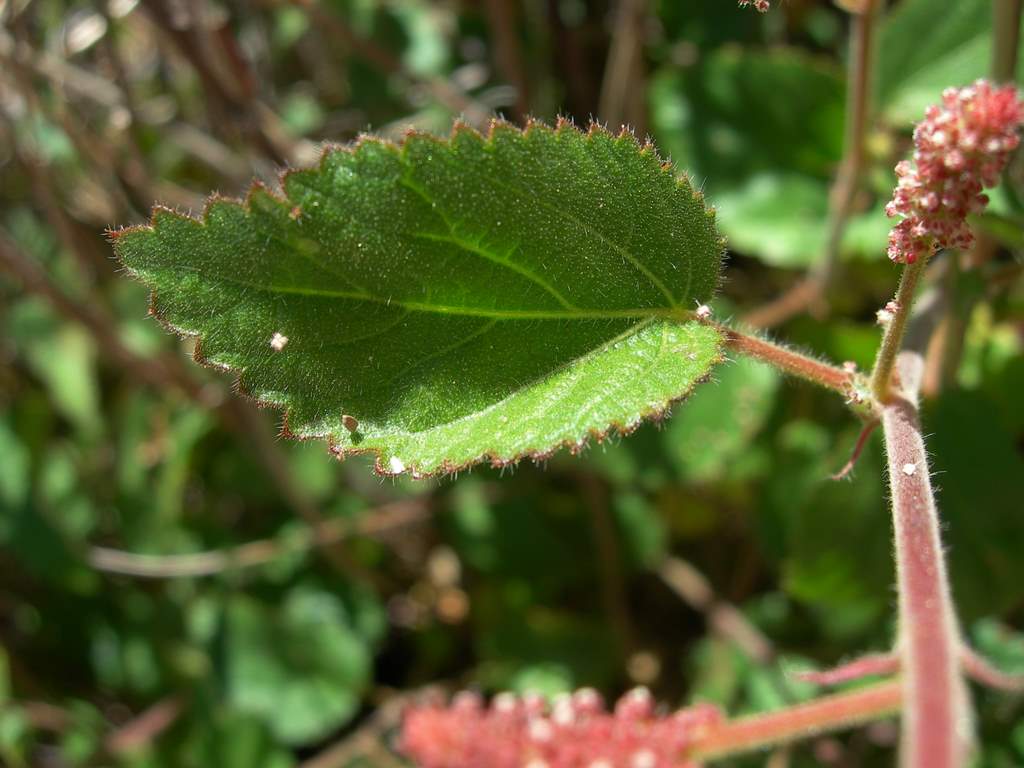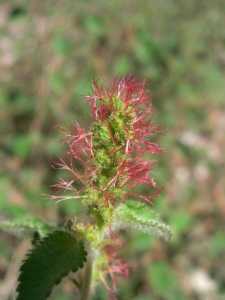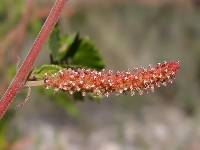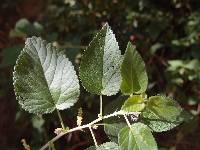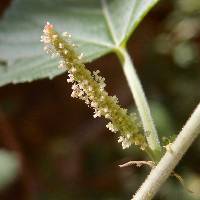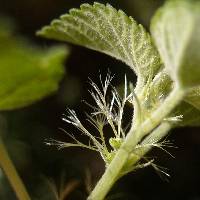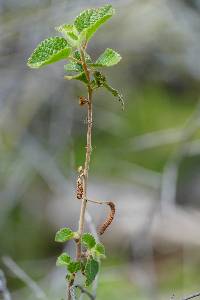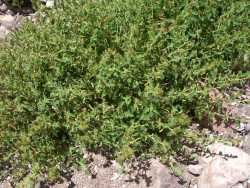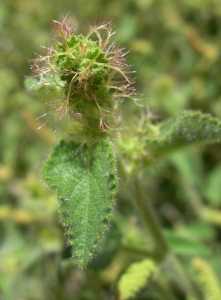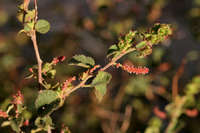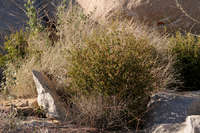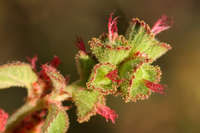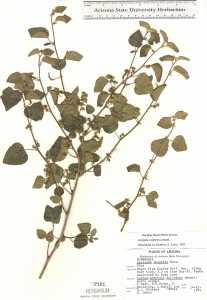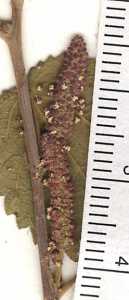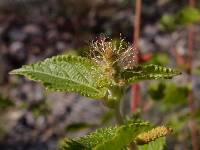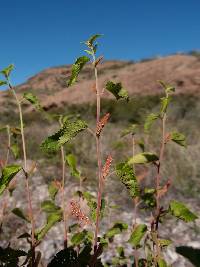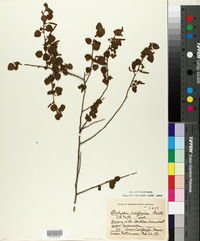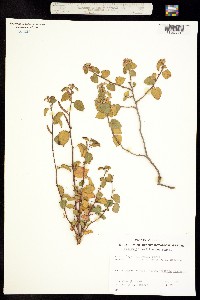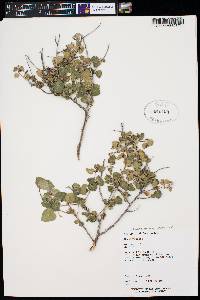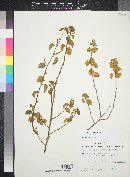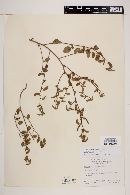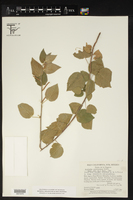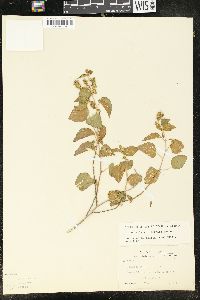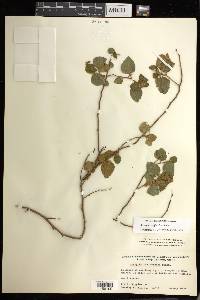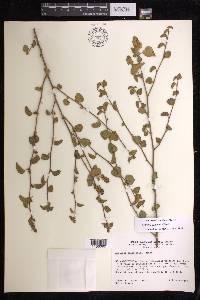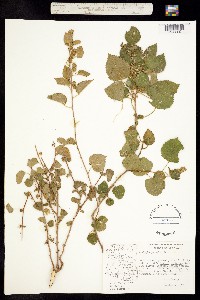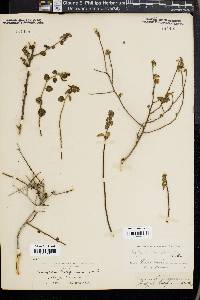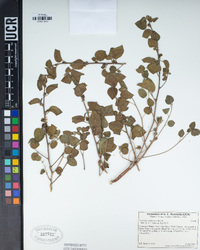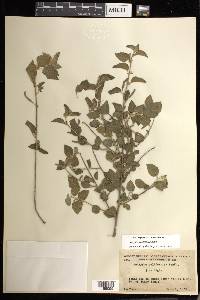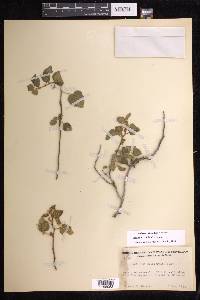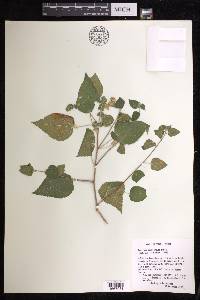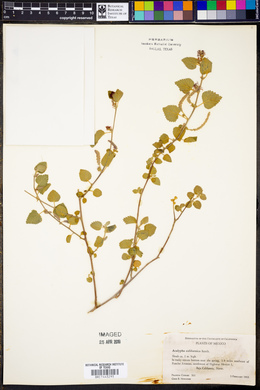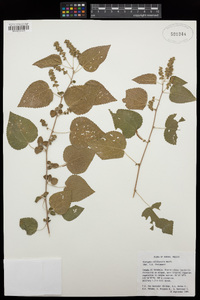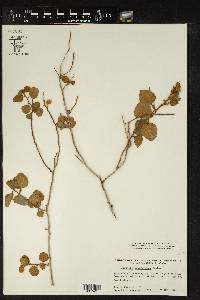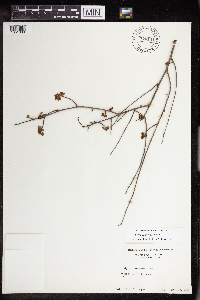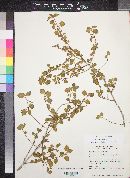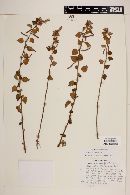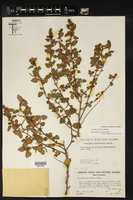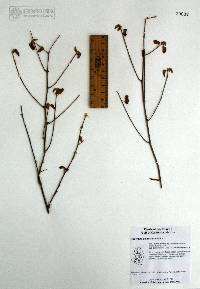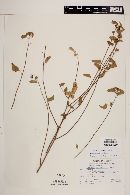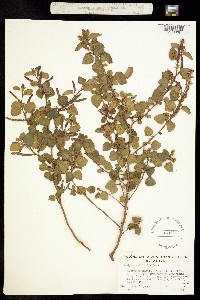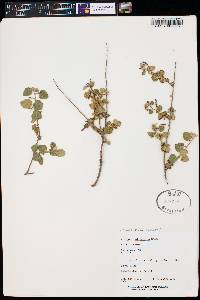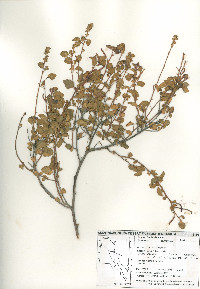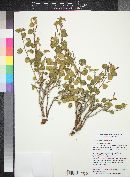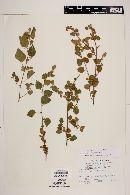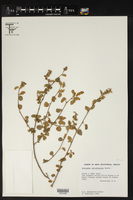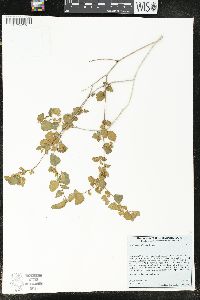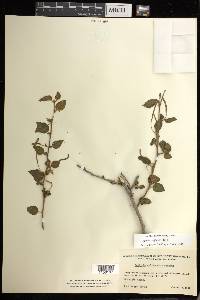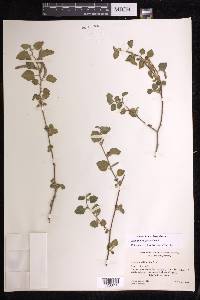
|
|
|
|
Family: Euphorbiaceae
California Copperleaf, more...copperleaf, Pringle threeseeded mercury (es: hierba del cáncer)
[Acalypha pringlei S. Wats.] |
Plant: shrub to 1 m tall; young stems densely to sparsely hirsute and densely glandular with stalked glands; older stems glabrate and becoming reddish or grayish Leaves: ovate to cordate, 1-5 cm long, 0.5-4 cm wide, hirsute and glandular; apex acute or obtuse; base truncate to rounded or cordate; margin crenate; petioles about half as long as the blade, with pubescence like the young stems INFLORESCENCE: SPIKES in lower axils with only staminate flowers or with 1(-3) pistillate flowers near base, 1-4 cm long, terminal spikes and those in the upper axils with only pistillate flowers, fairly open, 1-2 cm long, often conspicuously red in flower because of the stigmas; bracts subtending pistillate flowers 1-3 mm long in flower and 3-5 mm long in fruit, with (8-)10-18 small rounded teeth, hispid and glandular Flowers: STAMINATE FLOWERS very small, subsessile, several in the axil of a minute bract; calyx lobes 4; petals and disk 0; stamens 4-8, the anthers pendent, elongated, and twisted at maturity. PISTILLATE FLOWERS sessile, 1-3 in the axil of an often large foliaceous bract; calyx lobes 3(-5); petals and disk 0; pistil with (1-)3 carpels, the ovary (1-)3-locular, the style branches usually dissected into thread-like segments Fruit: FRUITS ca. 2 mm long, ca. 3 mm wide, short hispid and glandular. SEEDS 1.5-2 mm long, dark brown, finely pitted Misc: Rocky slopes and along washes; 350-900 m (1100-3000 ft); Jan-Dec, especially Mar-Apr and Sep-Nov REFERENCES: Levin, Geoffrey A. Euphorbiaceae Part 1. Acalypha and Cnidoscolus. J. Ariz. - Nev. Acad. Sci. 29(1): 18. Levin 1995, Jepson 2012, Kearney and Peebles 1969 Duration: Perennial Nativity: Native Lifeform: Shrub General: Shrubby perennials, to 1 m tall, central stems erect and generally much-branched, lateral stems spreading to ascending, young stems densely to sparsely hirsute and densely glandular with stalked glands, older stems glabrate and becoming reddish or grayish, plants with clear sap. Leaves: Alternate, ovate to cordate, 1-5 cm long and 0.5-4 cm wide, apices acute or obtuse, bases truncate to rounded or cordate, margins crenate, surfaces hirsute and glandular, petioles pubescent and about half as long as the blade. Flowers: Staminate and pistillate; infloresences of reddish catkin-like spikes or masses of stamens subtended by leafy bracts; staminate flowers very small, subsessile, several in the axil of a minute bract, calyx lobes 4, (petals and disks absent), stamens 4-8, the anthers pendent, elongated, and twisted at maturity; pistillate flowers sessile, 1-3 in the axil of an often large foliaceous bract, calyx lobes 3-5, (petals and disks absent), pistils with 1-3 carpels, the ovary 1-3-locular, the style branches usually dissected into thread-like segments, spike, terminal or axillary; staminate bracts minute; pistillate bracts leaf-like, toothed, infloresences staminate or pistillate; spikes in lower axils with only staminate flowers or with 1-3 pistillate flowers near base, 1-4 cm long, terminal spikes and those in the upper axils with only pistillate flowers, these fairly open, 1-2 cm long, often conspicuously red in flower because of the stigmas; bracts subtending pistillate flowers 1-3 mm long in flower and 3-5 mm long in fruit, with 8-18 small rounded teeth, surfaces hispid and glandular. Fruits: Spheric to lobed capsules to 2 mm long and 3 mm wide, surfaces short hispid and glandular. Seeds 1.5-2 mm long, dark brown, finely pitted with a minute scar appendage. Ecology: Found on rocky slopes and along washes, from 1,000-3,000 ft (305-914 m); flowering year-round, especially March-April and September-December. Distribution: Arizona, California; Mexico. Notes: This small shrub, usually to about 1 m high, has reddish spikes of pistillate flowers and masses of exserted stamens on the staminate flowers, the staminate flowers subtended by 2 cup-shaped leafy bracts with toothed margins; the leaves are hairy, juicy, and light green, these never becoming copper-colored despite the common name. Look for this species in Arizona in Pima county in chapparal and oak woodland communities. In Kearney and Peebles, look for this species under A. pringlei. Ethnobotany: Specific uses for this species are unknown, but other species in the genus have uses. Synonyms: Acalypha pringlei, Acalypha stokesiae, Ricinocarpus californicus Editor: LCrumbacher2012 Etymology: Acalypha comes from the Greek akalephes for "nettle," being an ancient name for a kind of nettle but applied by Linnaeus to this genus because of the nettle-like appearance of the leaves, and californica means of or from California. |
|
|
|
This project was made possible in part by the Institute of Museum and Library Services [MG-70-19-0057-19].
Powered by Symbiota

